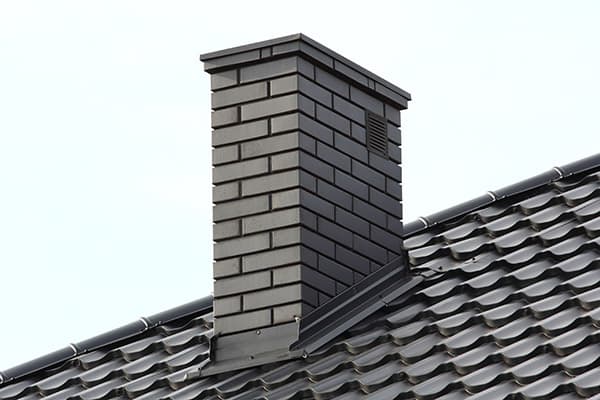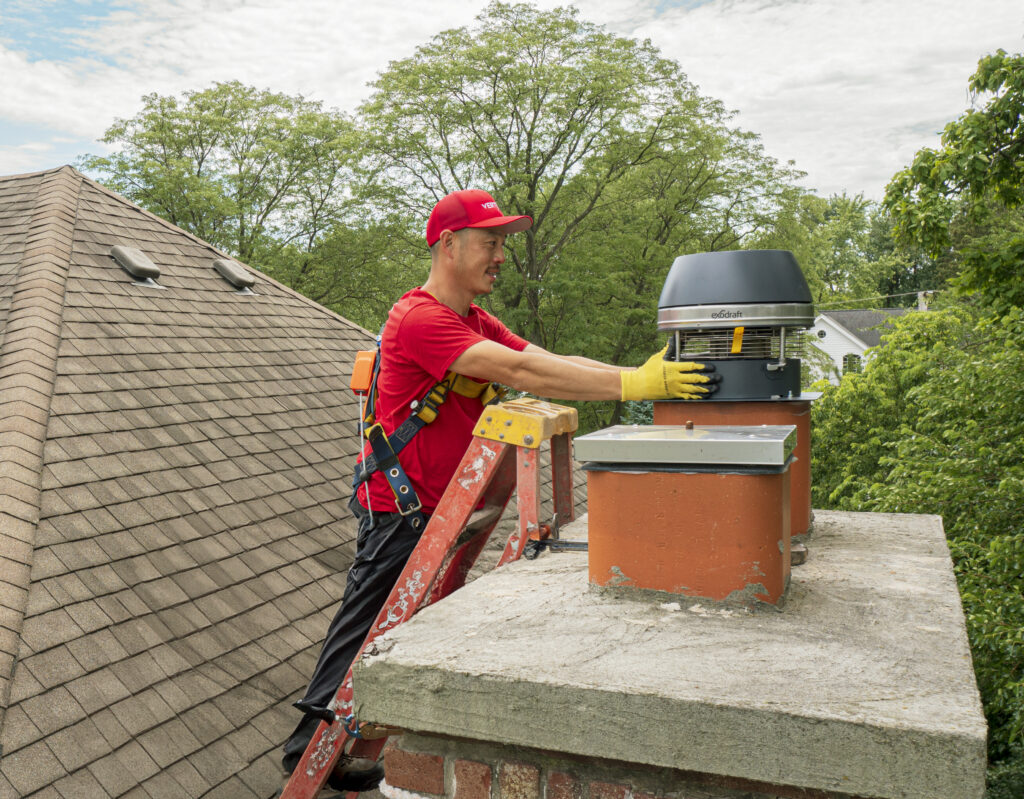
If you have ever looked inside of a chimney before you may have noticed some sort of brown, black or yellowish substance. A combination of soot and tar, this substance is called chimney creosote.
A natural byproduct of burning coal and wood, this substance can be found clinging to the insides of most chimneys to some degree. While in small quantities it isn’t a big deal, in larger quantities it can be dangerous.
The Science of Creosote
There are roughly two types of creosote - coal-tar and wood-tar. While coal chimneys aren’t unheard of, the toxic nature of coal means that wood is what is used in residential properties.
This wood-tar creosote is described as being colorless to yellow and greasy. Composed multiple types of natural chemicals - such as phenol, guaiacol, and creosol to name a few. Used as a cooking additive, specifically in meat smoking, creosote has also been found in the medical field.
Since antiquity creosote has been used to treat ear infections, toothaches and stomach problems. The antiseptic properties of some of the chemicals found in creosote have led it to be used for everything from skin irritation to odor neutralizer.
In the modern day, creosote has been overshadowed by safer chemicals, but many synthetic compounds have been derived from it used in medical practice even today.
Exposure to creosote directly can lead to numerous health problems. Consuming anything directly contaminated with coal-tar creosote can lead to skin irritation, chemical burns, along with numerous organ problems.
Limited studies seem to point to the fact that even the smallest amount of creosote can have carcinogenic properties increasing the risk of cancer. The largest health effect of this substance doesn’t actually have anything to do with problems related to consumption; creosote build-up in chimneys greatly increase the risk of residential fires.
The Lowdown on Chimney Creosote
Simply put, burning wood produces creosote. During the height of the wood-burning season, which would be during the cooler months, the constant influx of smoke, embers, and other particulates accumulate along the interior of the chimney.
Over an entire season, this build-up can lead to creosote deposits several inches in thickness. This results in a snowballing effect - more creosote leads to smaller pathways, resulting in even more creosote in building up.
All in all the main problem is a result of bad airflow. While certain chimney designs and materials are better than others at mitigating this problem, it will always be an issue in the absence of some unknown innovation or new fuel source.
What happens exactly is this: without proper airflow (like that found in a stove or fireplace) combustion of the wood isn’t complete. When the smoke rises it immediately starts to cool, this coolness of the carbon mixes with humidity to create the oily residue that is creosote.
Creosote by nature is highly flammable and when a sufficient amount has been built-up it can become ignited by a stray ember. Dubbed “chimney fires” these types of combustion are often many times hotter than the ones found in the fireplace.
The Dangers of Chimney Fires
One of the most dangerous parts of creosote accumulation is the chimney fire. These fires often burn thousands of degrees and can damage even sufficiently tough materials. In brick and mortar chimneys, this can lead to cracking of the flue and damage to the exterior itself, which can result in even more damage via an influx of humidity.
Constant undermining of the chimney shaft can lead to total collapse. Chimney fires are a threat to steel shafts as well, as the heating of the metal can warp or cause a fire by anything touching it.
These fires can occur unnoticed and last for days; occasionally though, with enough pressure, these fires can turn explosive. Approximately a quarter of all residential fires in the United States start in the chimney.
Many of the indicators that you have a chimney fire are cracking or popping noises, an intense smell described as hot, along with a lot of thick smoke. Some chimney fires can be observed on the outside, with flames shooting out of the top of the chimney.
Others have described a low rumbling sound, similar to a low flying airplane or a train. Sometimes it's possible to see if your chimney has had a fire.
Creosote that looks puffy, cracks in the exterior masonry that wasn’t there before, or flakes of creosote found on the ground. Damage to other parts of your home such as the rain-cap, TV antenna or roofing material are also good indicators of a chimney fire.
Cleaning the Creosote
Needless to say, it's highly recommended to clean your chimney from time to time. Creosote buildup can happen over a single season and shouldn’t be ignored.
A certified chimney sweep should take a look at your chimney annually but if you think you may have a problem, such as observing some indicators of a chimney fire, then getting someone to look at it is a good idea. A professional should be able to tell you what level of creosote you have as it determines the level of cleaning and inspection they need to do.

Creosote build-up is divided into three stages, with each successive stage being more dangerous and difficult to remove. The first stage or stage 1 is merely a thin soot that has accumulated on the inside of the flue.
This level can be brushed away with a basic chimney brush and can actually be done by most homeowners. Stage 2 creosote is where things start to get serious. This level is a thick and hardened tar that looks like tough black flakes.
A brush is mostly ineffective in this, with specialized tools such as a rotary loop needed to remove it. The most dangerous of all is stage 3 and might lead to the removal of portions of the chimney to fully clean.
This type of creosote is extremely thick, as it's multiple layers that have hardened over a long span of time. This type of creosote can easily ignite and requires a rotary head with a chain to break it away.
Minimizing Creosote
Often times the best way to clean creosote is to avoid it altogether. In order to reduce the amount of buildup, there are a few simple tips you can take. For one, avoid wet wood or other slow-burning combustibles (check out article on what not to burn in a fireplace).
This creates an excess of smoke that can quickly attach to the inside of a chimney. Ideally, you want to wait at least six months for wood to dry out before it's used.
Artificial logs might be easier to burn but be careful - often these products contain an excess of creosote. It's also important to keep airflow through the fireplace - even minor blockage up top can stock smoke from leaving, while an overly air-tight room can create a vacuum, reducing the effectiveness of smoke rising upwards.
Final Thoughts
Creosote is found inside chimneys from the burning of coal and wood. It has been used in multiple medical procedures, with even some modern medicines being derived from its chemical makeup.
Buildup inside of a chimney can lead to reduced airflow and possibly even chimney fires. Because of the danger associated with creosote buildup it's highly recommended to have your chimney cleaned on an annual basis.
Chimney Cleaning at Vertical Chimney Care
Getting your chimney cleaned regularly makes your home safer and having creosote in your chimney is something you don't want. At Vertical Chimney Care, we handle all your chimney needs by removing all of the soot and inspecting your chimney for any other problems you may have.
Contact us today to schedule your chimney cleaning!
